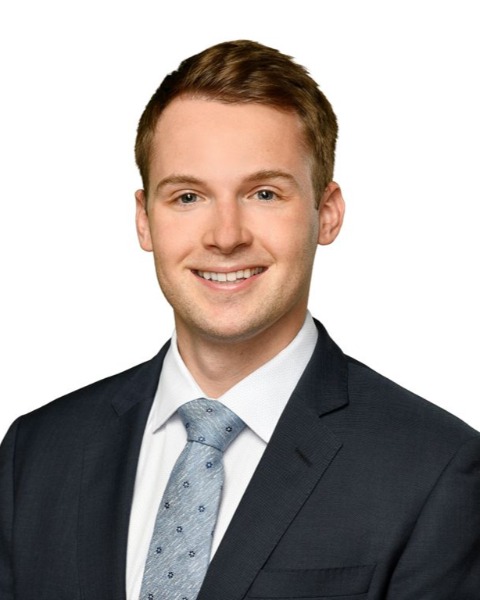Back
CANADIAN CARDIOVASCULAR SOCIETY
CONG
CCS
CCC
CPCA
SURG
EP
CPCA RICHARD ROWE ABSTRACT COMPETITION
COMPLEMENT ACTIVATION IS RELATED TO CLINICAL CARDIOPULMONARY DYSFUNCTION FOLLOWING PEDIATRIC CARDIAC SURGERY WITH CONTINUOUS ULTRAFILTRATION (CCC-202)
Saturday, October 28, 2023
15:15 – 16:15 EST
Location: Palais, 524AB
Target Audience: Pediatric cardiologists, Pediatric cardiology trainees, Cardiopulmonary bypass, Congenital

Joel Bierer, MD
Cardiac Surgery Resident
Dalhousie University
Dalhousie University
Presenter(s)
Disclosure(s):
Joel Bierer, MD: No financial relationships to disclose
Background: Cardiopulmonary bypass (CPB) causes systemic inflammation, contributing to post-operative organ dysfunction and prolonged recovery after pediatric cardiac surgery. Various immunologic pathways are stimulated during cardiac surgery and CPB, however, it is unclear which mediators are relevant to clinical outcomes. Furthermore, there are no effective anti-inflammatory therapies for CPB-associated inflammation. This study aims to evaluate a novel form of ultrafiltration and identify key inflammatory mediators related to organ dysfunction following pediatric cardiac surgery.
METHODS AND RESULTS: Pediatric patients were enrolled in a single-arm prospective clinical study (NCT05154864) and received standard cardiac operation, CPB, and subzero-balance simple modified ultrafiltration (SBUF-SMUF). Arterial samples were taken prior to CPB (Pre-CPB) and immediately after CPB and SBUF-SMUF cessation (End-CPB). The concentrations of 33 inflammatory mediators were measured at both time points and compared by Wilcoxon signed-rank test, and each mediator yielded a median fold change from baseline which is the quotient of the median difference (between Pre-CPB and End-CPB) and Pre-CPB concentration. Patients were followed until intensive care unit discharge, and validated clinical scores were recorded daily: vasoactive-ventilation-renal score, vasoactive-inotrope score, ventilation index and oxygenation index. A principal component analysis with hierarchical clustering (PCA-HC) included End-CPB inflammatory mediator concentrations, peak post-operative clinical scores, ventilation time and intensive care length of stay. Mahalanobis distance describes statistical differences between clusters. Results are median (IQR).
Results: Forty consecutive patients with various pathologies were enrolled. The majority were male (58%), age of 7.3 (1.7–39.0) months and weight of 6.7 (4.6–14.9) kg. There were no ultrafiltration-related complications and a low incidence of postoperative kidney injury (8%). The ventilation time was 19 (0 – 70) hours, and the standardized intensive care unit length of stay was 62 (24 – 95) hours. There was evidence of complement system activation and pro-inflammatory cytokine release with fold changes that range from -0.7x to 49.8x (Table 1). The PCA-HC revealed activated complement factors along with all peak clinical scores and prolonged intensive care requirements in cluster 3 (Figure 1). Cytokine, chemokine, and leukocyte adhesion molecule concentrations were distinct from cluster 3 and found in cluster 2 (Mahalanobis distance = 17.4; p= 0.001) and cluster 1 (Mahalanobis distance = 16.5; p = 0.004).
Conclusion: SBUF-SMUF was effectively and safely delivered. Activated complement factors, but not pro-inflammatory cytokines or chemokines, were related to cardiopulmonary dysfunction and prolonged recovery. Investigation of therapies that inhibit complement activation, propagation, or effector functions to enhance recovery after pediatric cardiac surgery is warranted.
METHODS AND RESULTS: Pediatric patients were enrolled in a single-arm prospective clinical study (NCT05154864) and received standard cardiac operation, CPB, and subzero-balance simple modified ultrafiltration (SBUF-SMUF). Arterial samples were taken prior to CPB (Pre-CPB) and immediately after CPB and SBUF-SMUF cessation (End-CPB). The concentrations of 33 inflammatory mediators were measured at both time points and compared by Wilcoxon signed-rank test, and each mediator yielded a median fold change from baseline which is the quotient of the median difference (between Pre-CPB and End-CPB) and Pre-CPB concentration. Patients were followed until intensive care unit discharge, and validated clinical scores were recorded daily: vasoactive-ventilation-renal score, vasoactive-inotrope score, ventilation index and oxygenation index. A principal component analysis with hierarchical clustering (PCA-HC) included End-CPB inflammatory mediator concentrations, peak post-operative clinical scores, ventilation time and intensive care length of stay. Mahalanobis distance describes statistical differences between clusters. Results are median (IQR).
Results: Forty consecutive patients with various pathologies were enrolled. The majority were male (58%), age of 7.3 (1.7–39.0) months and weight of 6.7 (4.6–14.9) kg. There were no ultrafiltration-related complications and a low incidence of postoperative kidney injury (8%). The ventilation time was 19 (0 – 70) hours, and the standardized intensive care unit length of stay was 62 (24 – 95) hours. There was evidence of complement system activation and pro-inflammatory cytokine release with fold changes that range from -0.7x to 49.8x (Table 1). The PCA-HC revealed activated complement factors along with all peak clinical scores and prolonged intensive care requirements in cluster 3 (Figure 1). Cytokine, chemokine, and leukocyte adhesion molecule concentrations were distinct from cluster 3 and found in cluster 2 (Mahalanobis distance = 17.4; p= 0.001) and cluster 1 (Mahalanobis distance = 16.5; p = 0.004).
Conclusion: SBUF-SMUF was effectively and safely delivered. Activated complement factors, but not pro-inflammatory cytokines or chemokines, were related to cardiopulmonary dysfunction and prolonged recovery. Investigation of therapies that inhibit complement activation, propagation, or effector functions to enhance recovery after pediatric cardiac surgery is warranted.
